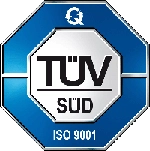The INA (Immigration and Nationality Act) is the Act that regulates the Immigration Law in the USA. INA is in force since 1952 and has been amended many times over the years. When the US Congress enacts public laws affecting immigration and nationality, INA may sometimes be amended with new sections. In other cases, Congress may pass immigration laws that do not affect INA.
Title 8 of the USA Code is the section that includes INA and most of other immigration laws.
Immigration and Nationality Act (INA)
INA’s title II, called “Immigration“, deals with the admission of foreign nationals to the United States. It also regulates the issuance of foreign entry visas. Below, we will explain the different types of Visa and how foreign nationals can enter the United States.
The Foreign Affairs Manual
Foreign Affairs Manual is a single, comprehensive, and authoritative source published by the United States Department of State collecting policies and procedures that govern its operations. The manual contains updates on Immigration Law in the USA published every day by the American Immigration Lawyers Association (AILA).
Immigrant and Non-Immigrant Visas in the United States
US Visas are divided into 2 main categories: Immigrant Visas and Non-Immigrant Visas.
The USA Immigrant Visa
An Immigrant Visa is issued to a foreign national who intends to live and work permanently in the United States. Usually the application is made by a family member or by the US employer to USCIS, US Citizenship and Immigration Services. If the applicant is eligible, the application is forwarded to the competent US representative mission abroad for continued processing and issuance of the immigrant visa.
In case the applicant is found eligible, he/she becomes a lawful permanent resident of the United States.
The US Non-Immigrant Visa
A Non-Immigrant Visa is issued to a foreign national seeking to enter the United States on a temporary basis for tourism, business, medical treatment and temporary work. In case of tourist/business visas (B visas), the application is made directly to the USA Consulate or Embassy abroad by the applicant.
For other types of work visas, such as E visas, a licensed Attorney has to direct the visa application to the competent diplomatic representation on behalf of the principal applicant. After the visa issuance, the applicant can seek to enter the USA: at the Port-Of-Entry, a CBP Officer will conduct an inspection to determine if the individual is eligible for admission under immigration law in the USA.
The major types of USA Entry Visas for work reasons
The purpose of the intended travel is what will always determine the type of Visa to apply for.The type of visa required is always determined by the purpose of the intended travel. There are more than 30 types of USA Non-Immigrant Visas. The most common for work reasons are the B1-E-L Visas.
The B1 Visitor Visa
The B1 Visitor Visa is for foreigners who want to enter the United States temporarily for business (visa category B-1), tourism (visa category B-2), or a combination of both purposes (B-1/B-2).
The B1 after-sales regulation
The B1 Visa is for people willing to enter the United States temporarily for business reasons. No salary or remuneration can be paid from a US employer. In case of after-sales service contract, a B1 visa may be granted to specialized workers going to the United States to install, service, or repair commercial or industrial equipment or machinery purchased from a company outside the United States, or to train US workers to perform such services.
In such cases, the contract of sale must specifically require the seller to provide such services or training and the visa applicant must possess specialized knowledge essential to the seller’s contractual obligation to perform the services or training.
Besides the documents required for all B1 visa applicants, the following must be presented:
- Contract between the seller and the company receiving the services;
- Work contract between the applicant and his employer;
- Letter of employment written on letterhead from the company selling the services, showing the personal data of the applicant, the specific duties and the intended length of stay.
The E Visa: Treaty Trader (E-1) and Treaty Investor (E-2)
The E Visa is dedicated to citizens of countries with which the United States maintains treaties of commerce and navigation. For the list of participating countries have a look here for Treaty Countries (state.gov).
To be eligible for an E visa, foreign nationals must be coming to the United States to:
- engage in substantial trade, including trade in services or technology, in qualifying activities, mainly between the United States and the treaty country;
- develop and direct the operations of an enterprise in which you have invested a substantial amount of capital; or
- be a national of Australia working solely in a specialty occupation.
Section 101 (a) (15) (E) of the Immigration and Nationality Act) provides that E-1 visa holders may enter the United States “solely to engage in substantial commerce” and that E-2 visa holders, “solely to develop and direct the activities of an enterprise” in which they have invested.
The L Visa for Intracompany Transferee in the United States
The L Visa (Intracompany Transferee) is for foreign citizens who want to work at a US branch or subsidiary of the current employer in a managerial or executive role, or in a position requiring specialized knowledge. Individual must have been employed by the same employer abroad continuously for 1 year within the 3 preceding years.
The L Visa is further divided into 2 types:
- L-1A visa – for executives or managers, it enables a foreign company which does not yet have an affiliated US office to send an executive or manager to the United States with the purpose of establishing one.
- L-1B visa – for employees with specialized knowledge relating to the organization’s interests.
The ESTA program
ESTA (Electronic System for Travel Authorization) is an automated system that determines the eligibility of visitors to travel to the United States under the Visa Waiver Program (VWP). ESTA application collects biographic information and answers to VWP eligibility questions.
The Visa Waiver Program allows citizens of 40 countries to travel to the United States for business or tourism for stays of up to 90 days visa free.
Authorization via ESTA does not determine whether a traveler is admissible to the United States. US Customs and Border Protection officers determine admissibility upon travelers’ arrival.
When to submit the ESTA application
ESTA applications may be submitted at any time prior to travel to the United States.
For how long will the ESTA be valid?
ESTA’s validity is 2 years from the time of authorization. However, it allows travellers to stay in the US for 90 days at a time.



















